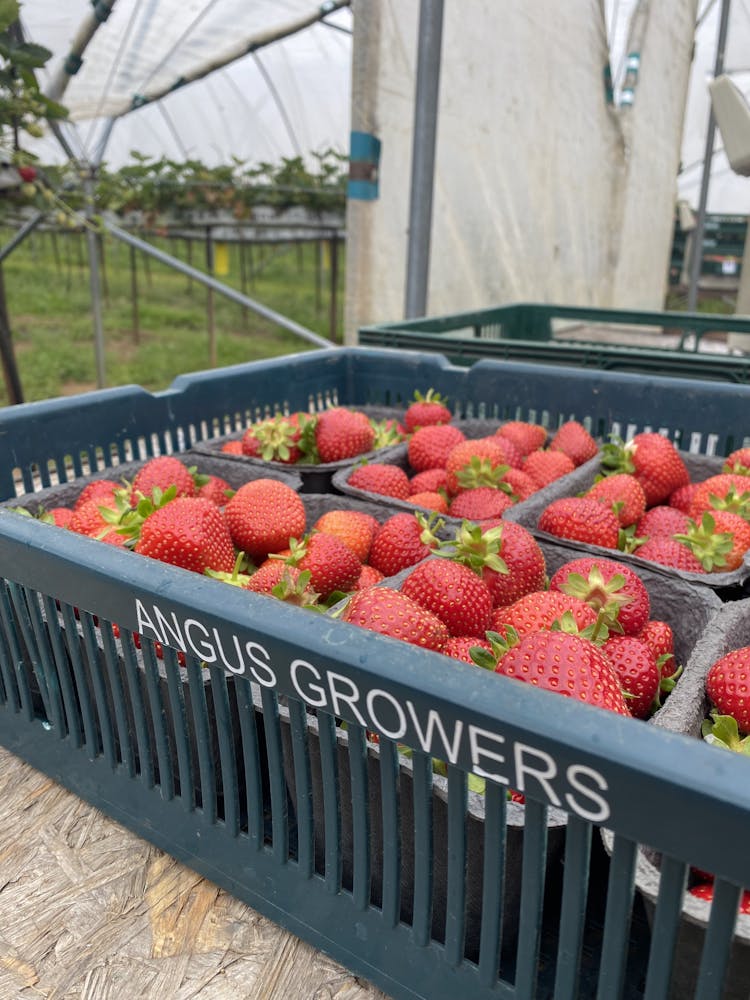Save Our Strawbs.

Ever tried growing strawberries? Then you’ll know that they come in all shapes and sizes – and colours too. You’ll also know that it’s sometimes the dinkiest, wonkiest ones that are the sweetest, which is berry good news for our boxes this summer.
We hit the fields to speak to Valy at Oaklands Fruit Farm, to find out why strawberries get rejected in the first place, what growers can do to fight food waste and what we should make with our rescued berries this summer. Let’s dig in.
O: Hi Valy. Can you tell us about your farm? Where are you and what do you grow?
V: Oaklands Fruit Farm is in the Vale of Evesham, Worcestershire. We have around 100-120 polytunnels across 20 acres, and we grow six varieties of high-quality strawberries. My personal favourites are the Ava Star and Ava Magnum varieties, which we’ve bred over many years to be plump and juicy.
O: Yum! So does that mean you can predict what they’re all going to look like?
V: Unfortunately not... The appearance and size of strawberries can be affected by all kinds of things – especially the weather.
O: Tell us more – how might the weather affect your strawbs?
V: Strawberry season usually runs from May to around October/November, but production will vary across these months. Warm weather can mean big crop flushes, whereas disease and cooler weather can mean both slower plant growth and, in some cases, no crop at all.
The weather also affects the colour and taste of our strawberries. So in slower, cooler weeks, strawberries take longer to ripen and end up darker, but still sweet. But on hotter days, strawberries will ripen faster so end up smaller and even sweeter. As much as we try to forecast and plan ahead, there are some things you just can’t predict.
O: So are all these shapes, sizes and colours acceptable to your buyers?
V: It is harder to find customers for these berries. But that’s where Oddbox comes in! As well as rescuing strawberries that are “too small”, “too big” and “too misshapen”, you also help by taking surplus stock at the end of the season. Demand might dip when autumn begins, but our berries sometimes have other ideas.
O: And what would happen to these strawberries without us?
V: Luckily there are lots of other destinations for strawberries – including being used for jam and flavourings. But we’d always rather that anything that can be eaten, is eaten. Whatever it looks like.
O: We couldn’t agree more. Do you have any advice for other growers trying to reduce food waste on the farm?
V: Staff training is hugely important – not only for making sure fruit is picked correctly and not damaged in the process, but also for making sure that only fruit which is inedible is graded out. Choosing the right varieties for long shelf-life and quality is also key, and something we’ve worked hard on over the years to get right.
O: And how should people store their strawberries at home to avoid waste?
V: At Oaklands we pick the strawberries during the coolest part of the day, which is between 4:30am and 11am. We then transfer them straight to a cooling room – by keeping strawberries in your fridge you can double the amount of time they’re fresh.
O: Finally, what shall we make with our rescued strawberries?
V: Eton mess, or just eat them whole!
O: Thank you Valy, we can’t wait to try your berries if they hit our boxes.
Unpacked a punnet of strawberries? Check out our juicy summer berry recipes, and don’t forget to show us your creations using #OddIsGood. Now who’s got the cream?

